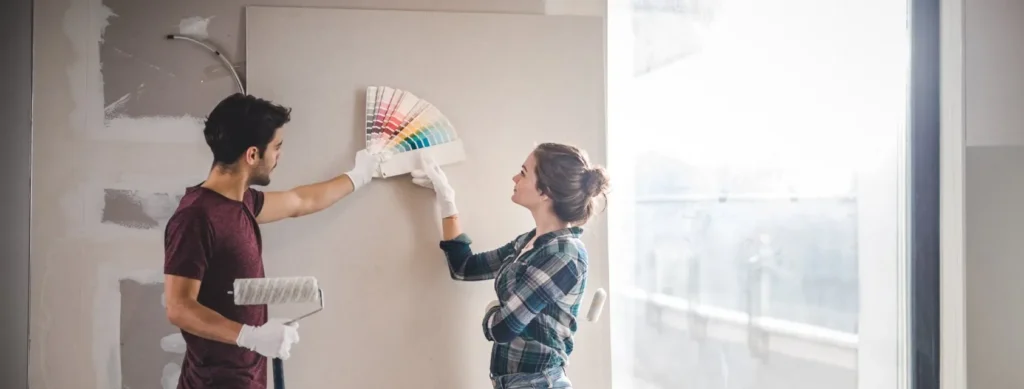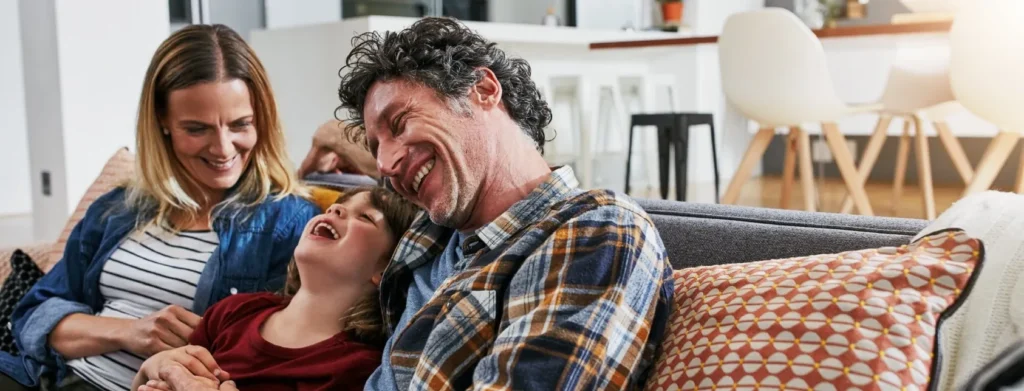
Shared Ownership Mortgages
Learn about shared ownership mortgages in our guide. What they are, shared ownership remortgages, the fees involved and more.
Speak to a mortgage adviser
Fill out this enquiry form and we’ll contact you to book a free call with one of our mortgage experts.
"*" indicates required fields
A shared ownership mortgage could be the key to helping you get on the property ladder. However, it’s different from a standard residential mortgage. Rather than buying the entire property yourself, you’ll buy a share, anything from 25% to 75% of the property, alongside a housing association or through a government mortgage scheme. You’ll then pay a mortgage on your share and pay rent on the rest.
Shared ownership mortgages are ideal for first-time buyers struggling to save a big deposit. In most cases, you’ll need just a 5% deposit towards the part of the property you’re buying. Another huge benefit of shared ownership mortgages is that you can often buy more of the home by increasing your share over time, known as staircasing. It’s possible to buy shares in 10% increments which have the added advantage of reducing your rent.
Contents
Who Qualifies for a Shared Ownership Mortgage?
You may qualify for a shared ownership mortgage if your annual household income is £80,000 or less (£90,000 or less if you live in London) and you’re unable to afford all of the deposit and mortgage payments for a home that’s suitable for your needs.
You also need meet one of the following criteria:
- You’re a first-time buyer
- You were once a homeowner but can’t afford to buy a home now
- You’re creating a new household, such as after a divorce
- You’re already a shared owner and want to move home
- You own your home but want to move and cannot afford a property that’s suitable for your needs
To qualify for certain homes under the shared ownership mortgage scheme you may have to prove your connection to the area where you want to buy the home – for example you already live or work there.
The Government has a shared ownership eligibility checker on its website.
Advantages and Disadvantages of Shared Ownership
Shared ownership can help you get on the property ladder, but it does come with certain risks.
Advantages of shared ownership
- Makes it easier to get on the property ladder – shared ownership enables people on lower incomes to get on the first rung of the property ladder while reducing the mortgage costs of owning the property
- Lower deposit – you typically require a smaller deposit as you only need a mortgage for the share of the property you will own
- Staircasing – shared ownership allows you to buy more shares in the property in small increments, usually as low as 1%. Gradually increasing your share of the property can eventually lead to full ownership
- Security – owners have more stability compared to renters as they have a long term stake in the property
- Equity growth – as the property’s value increases, the value of the share you own also increases
Disadvantages of shared ownership
- Charges – while shared ownership makes owning a home much cheaper than buying it outright, you’re responsible for all maintenance and repair costs, despite only owning part of it. You also have to pay rent on the portion of the property you don’t own
- Stamp Duty – you will have to pay Stamp Duty on the full value of the property, despite only buying a portion
- Risk of negative equity – if there’s a drop in house prices, it’s likely you could end up with negative equity as the amount of equity you will have built up in your property will be smaller than if you’d purchased the property through a traditional route
- Potentially difficult to sell – selling a property under shared ownership is complicated, as you don’t own 100% of the property. You’re required to give the local housing authority first refusal of buying the property from you, and it may have the option to find another buyer before you can put it on the market
- Staircasing costs – if you increase your ownership of the property through staircasing, you’ll have to pay valuation and legal costs. Note that you won’t have to pay any more in Stamp Duty on the shared ownership property as you would have paid Stamp Duty on the full amount when you bought your first share
Can You Remortgage a Shared Ownership Property?
It’s possible to remortgage a shared ownership property in a similar way to a standard remortgage. This means taking out a new mortgage on a property under shared ownership. Shared ownership remortgages aren’t much different from a typical mortgage; however, only a limited number of mortgage lenders offer shared ownership remortgages. Remortgaging allows you to secure a better deal on your loan, which can be particularly useful when the amount of equity in the home has increased, or your income has risen.
Why Remortgage Your Shared Ownership Property?
You may choose a shared ownership remortgage if you wish to own more shares of the property. Staircasing is a good way of helping you work towards eventually owning the property outright. When you increase your share of your home, you’ll benefit from any increase in the home’s value. You’ll also reduce the rent you’re paying on the share of your home that you don’t own, so if you staircase your way to owning 100% of the property, you won’t have to pay any rent at all. If you choose to sell your home in the future, the more shares you have, the more you will cash in, especially if the property has increased in value.
Shared ownership remortgages are also a useful way of ensuring you get a better deal on your mortgage. While shared ownership remortgage deals may be limited, it’ll give you the chance to lower your mortgage rate or switch to a new deal before coming to the end of your current discounted period.
What Is Staircasing in Shared Ownership?
With shared ownership mortgages, you can expect your share of the property to range from anywhere between 25% and 75%. If you opt for a shared ownership remortgage, you can grow the number of shares you have in the home by up to 100%, so you become the sole owner of the property. This is called staircasing and is the step-by-step processing of continuing to purchase more shares. You can usually only staircase your shares a maximum of three times. Nonetheless, it’s a good idea to check the conditions of your specific arrangement.
How to Remortgage Your Shared Ownership Home
You can apply to remortgage your shared ownership property much like you would for a standard remortgage. This will likely include the process of income assessments and a valuation of the property. Swapping to a different mortgage lender may also mean you can borrow more. They’ll reimburse your existing lender in full, and you’ll be left with extra capital to purchase more shares in your property. Make sure you’re aware of your shared ownership agreement terms and that you have informed the housing provider of your plan to remortgage.
Calculating the Share Value

Once you’ve informed the relevant housing provider that you intend to remortgage your home, they’ll likely ask for an up-to-date valuation carried out on the property. This valuation is used to determine the share value and give you a clear idea of how much available equity is in your property and what the shares you’re looking to buy are worth. The housing provider will likely require the valuation to be completed by a qualified surveyor. A valuation figure usually lasts three months, and if you haven’t remortgaged within that time, you’ll have to arrange for a new valuation at your cost.
Shared Ownership Remortgage Fees
The costs associated with shared ownership remortgages tend to be higher than a standard mortgage as only certain lenders will arrange shared ownership mortgages. However, despite this, there are good rates to be found, so speak to one of our mortgage experts who will be able to advise you on the best shared ownership remortgage deals currently available. Staying with your existing mortgage lender may actually be your cheapest option, as moving lenders will likely cost you in fees. Some mortgage lenders may pay these charges to secure your custom, so it’s well worth looking into.
To find out more about shared ownership mortgage deals that might be right for you, call us today on 0808 256 4469 or enquire online, and one of our advisors will talk you through all your options.
Get in touch with our experts
Book an appointment with an adviser today and we’ll help you work out which mortgage deal is best for you and your requirements.

